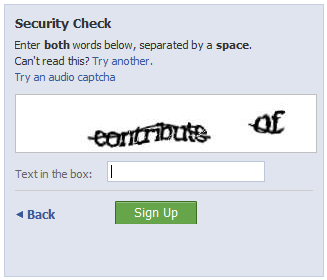Radio Word Counts
The Radio Mercuries are here! The Radio Mercuries are here!

Say My Name, Bitch

The etymology of branding starts with cattle. In order to tell one rancher's cows from the thousands of other virtually identical cows on the range, ranchers would brand them with a unique mark. Theoretically, the branding we speak of when we gather in agency and client conference rooms across the globe is a little more sophisticated. Branding shouldn't be synonymous with "labeling." It should be more like "brand character development." I should be learning something about your brand or product. You should be giving me something, adding something to my life, creating a positive association with your brand. Something to help me like it.
Yet, in any creative presentation, we hear: "I'd like to see more branding." "More branding upfront." "More brand registration." In other words, say our name, show our logo, and then say our name some more. Because, as we all know, someone repeating their name over and over and over makes us like them. "Hi, I'm Billy. It's my name. Billy. Billy is here!"
A lot of brands put their ads through quantitative testing. Companies like Ipsos ASI have perfected the art of making billions of dollars by dumbing down creative work, mostly by insisting that they need "more branding." They do this because they believe in an inherent link between engagement, recall and likability. In other words, people remember what they like. Which seems true. But it also leads to the foolish belief that I can make you like my brand simply by repeating my name enough. Being memorable is not the same as being likable. If I burn my name into your arm with a hot metal poker, I can guarantee you'll remember me. Does that mean you'll like me?
In the latest example of this confused philosophy, a company called Solve Media has developed a system by which CAPTCHAs are branded. You know CAPTCHAs. They're those squiggly words you have to decipher when you buy tickets online, etc. They basically verify that you're a human.

I think most of us would agree that CAPTCHAs are fairly annoying. A necessary evil at best (however, as an aside, I do find the use of ReCAPTCHAs to be a cool, innovative solution to two problems at once). So the brainstorm of the people at Solve Media is to create branded CAPTCHAs. Instead of typing in "contribute of," you might be asked to type in "The Ultimate Driving Machine" or "Just Do It" (though I doubt either BMW or Nike will engage in this type of "branding.")
Here's a little video championing this innovation:
Solve Media from Solve Media on Vimeo.
The problem here is twofold:
1) You're associating a brand with something annoying and intrusive. What are you giving me here? You're standing between me and something I want with your stupid slogan. Rather than walking away with a positive impression, I'm irritated, and your brand is the source of my irritation.
2) This is amoeba-level marketing. Just because I see your slogan doesn't mean I like your brand. "Hi. It's me again. Billy. Remember me? I told you my name earlier. It's Billy! Billy is here!"
Come on, folks. We can do better than cattle branding.
Google Scribe a Celebrity
Here's one that taps into a new offer from Google Labs.

Modernista Is Not For Everyone

If you go to Modernista's Website, you find a unique and inspiring message. "Modernista is not for everyone."
Many agencies will take a shot at any client they think they can win. But an agency with a good sense of who they are and who they want to be realizes that they can't be the right agency for every client. Like a brand, they have a character. Taking on the wrong clients will dilute that character pretty quickly.
Understanding what your agency's brand is can be just as important as understanding your clients' brands. But, as Tim Williams points out in Take A Stand For Your Brand, agencies can be surprisingly bad at defining and understanding their own brand. We tell our clients they can't be everything to everyone. We would be wise to heed our own advice.

Madison Ave vs. Silicon Valley
Cover Letters
When you start sending out your portfolios, you’ll want to include a cover letter. That said, I don’t think many creative directors make time to read cover letters. So I’m offering the advice I got in portfolio school, which I’ve used ever since:
1. Tell them why you like their agency.
2. Tell them the job you want.
3. Tell them why you think you'd be a good fit.
4. Give them your URL, PDF or however you're showing your work.
5. Tell them you'll follow up with a phone call in the next couple of weeks.
Pretty simple. And I’d shoot for a word count of under 120. (Exactly the number of words that are used in this post.)
The New Yorker, iPhones, and Experimentation
Collaboration
Character > Message

I was asked to do a guest editorial for the local ad blog, the SF Egoist. It's about how we tend to neglect brand character for the sake of message, and what we can learn about character development from fiction writers. If you're interested, you can check it out here.
